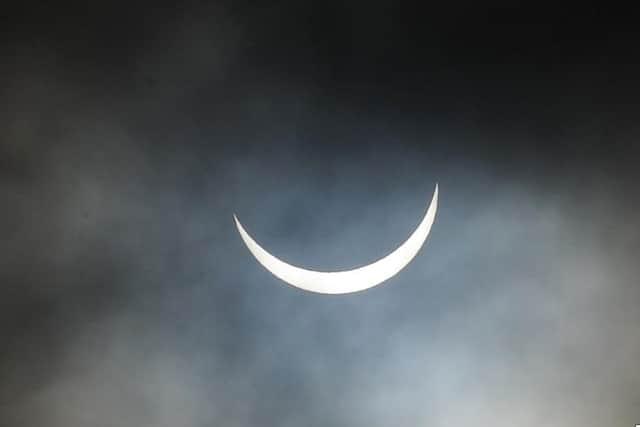Solar eclipse 2022: what is partial solar eclipse in April, when Black Moon is visible - how to see live in Sheffield
and live on Freeview channel 276
The first solar eclipse of the year will arrive this weekend, coinciding with the second new moon of April called the Black Moon.
On Saturday 30 April a partial solar eclipse will be visible over parts of Antarctica, South America, and the Pacific and Atlantic oceans.
Advertisement
Hide AdAdvertisement
Hide AdSadly skygazers in the UK and US won’t get to see it in person, but it is possible to watch the rare celestial event unfold via a live stream.


How can I watch the partial solar eclipse live?
You can watch the partial solar eclipse via a live stream that will kick off on the YouTube channel Gyaan ki gareebi Live when the eclipse begins.
According to timeanddate.com, this week’s partial eclipse will first be visible at 2:45 p.m. EST (7:45 p.m. UK time) and will hit its peak a couple of hours later, before ending at 6:37 p.m. EST (11:37 p.m. UK time).
What is a partial solar eclipse?
A partial eclipse takes place when a portion of the Sun is obscured, plunging a section of it into darkness when viewed from Earth.
Advertisement
Hide AdAdvertisement
Hide AdAt its peak, Saturday’s eclipse will see roughly 65% of the Sun blotted out by the Moon, according to NASA.
The amount of Sun which is obscured by the Moon depends on where the person viewing the event happens to be.
Partial eclipses last longer than total solar eclipses, the next of which won’t come around until April 2023.
On 25 October another partial eclipse will be visible from Europe, Northeast Africa, the Middle East and West Asia, according to NASA.
What is a solar eclipse?
Advertisement
Hide AdAdvertisement
Hide AdA solar eclipse sees the Sun completely blocked by the Moon casting a shadow on the Earth. This partial or total blockage happens when the Sun, Moon and Earth line up.
When the Moon comes between the Earth and the Sun during a new moon phase, it blocks the light and forms a shadow across the globe.
Eclipses don’t happen on every new moon. Solar eclipses usually take place between two and five times each year.
A total eclipse on average occurs somewhere on Earth about every 18 months.
